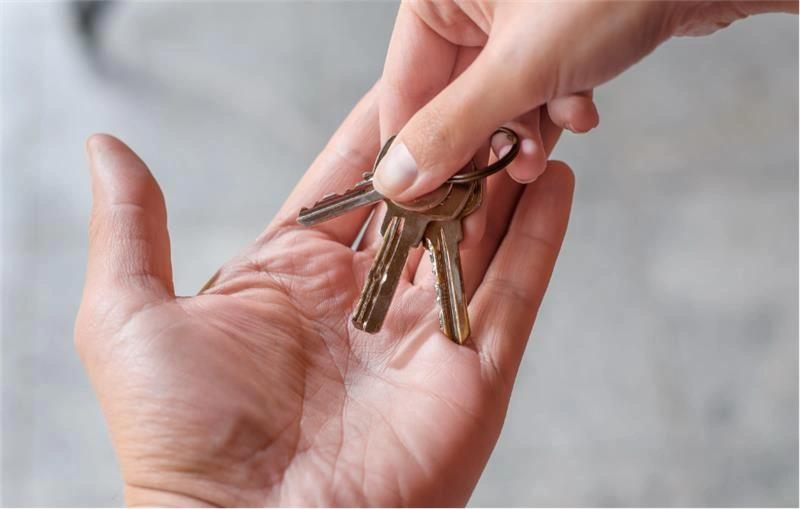Student’s Guide to Subleasing an Apartment


Being a college student often means living a transient lifestyle. While school is in session, you may live in a dorm or an apartment near campus. But when summer rolls around, your plans may take you elsewhere, whether it’s returning home, studying abroad, or exploring new opportunities. However, what happens to your apartment while you’re away?
Subleasing is a common solution among college students who go away for the summer or for a semester. However, it involves many moving parts, from navigating the specifics of a lease agreement to communicating with your landlord. Thankfully, ForRentUniversity offers resources to simplify the subleasing process, helping you navigate the details and find the best option for your housing needs.
In this guide, we’ll cover the ins and outs of subleasing, from lease compliance to communication strategies. Here’s a look at what we’ll cover:
What Is a Sublease and How Does It Work?

Let’s start with the basics. What is a sublease? And how can it benefit a college renter? A sublease occurs when an existing tenant re-rents their home/room to a third party who's not on their lease agreement. Why might someone do this, you ask? Well, for a college student, it’s common for many reasons.
Say you signed a year-long lease at an apartment in your college town. However, for the spring semester, you decide to study abroad, leaving your apartment vacant for four months. Rather than paying rent while you’re away, a sublease allows you to temporarily transfer your lease to someone else, who will then pay the rent for those four months. They have a place to stay, and you have more money to spend across the globe. It’s a win-win!
Sublease vs. a standard lease
So, how does a sublease contractually differ from a conventional lease agreement? In a standard lease, the agreement is between you and your landlord. This agreement establishes you as the primary occupant of the property, contractually obligating you to pay monthly rent and adhere to other lease terms such as guest policies, property maintenance, etc. This standard lease agreement lies the foundation for your tenancy. However, when you sublease, things get a bit more complex.
While a traditional lease agreement is between you and your landlord, a sublease introduces new players into the mix. A sublease involves the original tenant, the landlord, and the new tenant, otherwise known as the subtenant. Much like a game of telephone, this arrangement is quite linear. The subtenant pays the original tenant to occupy the property. Then, the original tenant gives that money to the landlord for rent. It’s a multi-layered arrangement, but it can work when you have trust and proper communication among all three parties.
The key thing to remember when subleasing a property is that there is no contractual tie between your subtenant and your landlord. That means you, the original tenant, still retain the responsibilities of your lease. Meaning, if your subtenant damages the property or misses a rent payment, you will be held responsible. That said, only sublease if you have a subtenant you can trust. Otherwise, you might consider subletting the property for less liability.
Subleasing vs. subletting
Many use the terms sublet and sublease synonymously, but they are not the same. As just mentioned, a sublease involves zero contractual ties between the landlord and subtenant. A sublet, on the other hand, involves drafting a new contract between the landlord and subtenant. In this arrangement, ties are cut with the original tenant, and the subtenant contractually assumes the responsibilities of the lease. This option is great if you have no plans to return to the property. However, if you’re only leaving temporarily and plan to return to your rental, subletting won’t be in the cards.
Why subleasing makes sense for students
Subleasing is particularly beneficial for students because of their transient lifestyles. It’s common for college renters to travel for internships, study abroad programs, or summer breaks. However, taking these opportunities often means leaving apartments behind, which is tough with a year-long lease. This is where subleasing comes in.
Subleasing allows students to retain their lease while offsetting costs. Whether you're backpacking through Europe or interning in a bustling city, subleasing ensures you’re not stuck paying for an empty apartment. It removes the financial stress and allows you to fully embrace new opportunities without worrying about your lease back home.
How to Find a Sublease as a Student

There are two sides to subleasing. You’re either the sublessor or the sublessee. If you’re the latter, we have some tips on how to outsource a sublease, including where to find one, red flags to look out for, and more. Let’s dive right in.
Where to look
If you’re seeking temporary housing, there are several resources you can explore. First and foremost, word of mouth is a great way to find a sublease. This builds on the trust we discussed earlier, as subleasing from a friend naturally involves a level of confidence that often leads to a smooth and successful arrangement.
Social media is another popular outlet for subleasing. Many universities have Facebook groups where students can find housing options. The university's official housing office might also have alternative housing options to explore.
How to spot a scam
Because subleasing is done through a third party rather than an official PMC or landlord, it’s important to search with caution. Unfortunately, there’s a chance that certain sublease listings could be scams, especially in college towns where renters may be young or naive to rental industry standards. To avoid these scams, look out for red flags like the following:
- Unusually low rent: If the rent seems too good to be true, it probably is. Scammers often lure in potential tenants with incredibly low prices, only to disappear after receiving payment.
- Upfront payments: Be wary if the landlord or sublessor asks for full payment before you have signed any official documents or seen the property in person.
- Suspicious communication: If the landlord or sublessor is avoiding direct contact or constantly changing their story, this could be a sign of a scam.
Questions to ask before signing
Once you’ve found an apartment to sublease, make sure to ask the right questions before committing. As just mentioned, proceeding with caution is always the best course of action, even if you’re subleasing from a close friend. So, make sure all questions are answered before finalizing the arrangement. Here are some questions you could ask:
- What’s included in the rent? (parking, Wi-Fi, utilities, etc.)
- Are there any additional or hidden fees?
- Can I see a copy of the lease agreement?
- How long is the sublease for?
- Can I make changes to the space?
- Who is responsible for maintenance and repairs?
Asking these kinds of questions will help minimize misunderstandings throughout the sublease. Plus, it will demonstrate your responsibility and care as a subtenant, which will likely make the sublessor more comfortable with you taking over their space.
How to Sublease Your Apartment for the Summer

Now, let’s change gears and discuss how to sublease your apartment. If you find yourself in a situation where you're leaving your space vacant, use the following steps to successfully find a subtenant to occupy your apartment:
Check your lease agreement
Before you start the subleasing process, you must check your lease agreement. Not every landlord or community will permit subleasing. So, it’s important to thoroughly read the fine print before making arrangements with a subtenant.
If subleasing is allowed, make sure to strictly follow the specific guidelines or restrictions outlined in your lease. For example, your landlord may require you to get approval before subleasing, or they may only allow subleasing for a certain period of time. In these cases, communicate with your landlord to confirm their expectations and ensure a smooth subleasing process.
Spread the word
Next, spread the word. Using the platforms we mentioned earlier, such as word of mouth or social media, advertise your apartment to the community. Remember, you want to ensure your subtenant is trustworthy and responsible. So, it may be best to reach out to friends, colleagues, or acquaintances first. If that doesn’t work out, utilize social media to spread awareness and acquire inquiries.
Screen potential candidates
Once you’ve found a prospect, it’s important to screen them properly. Again, this needs to be someone you can trust to pay rent on time and abide by lease rules. So, make sure to ask for references, proof of income, rental history, etc. Doing so will provide insight into their personality, lifestyle, and compliance.
Tips for a Smooth Subleasing Experience

Subleasing your apartment has a huge risk of going south. So, to ensure things go as smoothly as possible, here are some valuable tips for creating a successful subleasing arrangement:
Communicate with your subtenant
Communication is key when it comes to subleasing. Make sure to establish a strong line of communication with your subtenant from the very beginning. Be open and clear about the terms of the sublease, including the duration, rent amount, responsibilities, and any other expectations. This will help avoid misunderstandings or conflicts in the future.
Follow a move-in/move-out checklist
Just like you did at the beginning of your lease, follow a move-in checklist with your subtenant to document the condition of the apartment before they move in. This will help protect you from any disputes over damage when the sublease ends. Similarly, have a move-out checklist to ensure that the apartment is returned in the same condition it was received.
Stay in touch with your landlord
Finally, maintain open communication with your landlord throughout the sublease period. Inform them of any updates or issues involving your subtenant. This demonstrates responsibility and respect for the lease agreement and helps mitigate potential conflicts. Remember, your name remains on the lease, so staying proactive and compliant is key.
FAQs
Can college students sublease apartments legally?
Yes, college students can legally sublease apartments, but it depends on the terms of their lease agreement. Always check with the landlord or property manager for permission before subleasing.
What’s the difference between subleasing and assigning a lease?
Subleasing means the original tenant rents out the apartment to someone else but remains responsible for the lease. Assigning a lease transfers all rights and responsibilities to the new tenant entirely.
Is it risky to sublease an apartment?
Subleasing can be risky if the subtenant doesn’t pay rent or damages the property, as the original tenant is usually still liable. Proper agreements and choosing trustworthy subtenants can help reduce these risks.